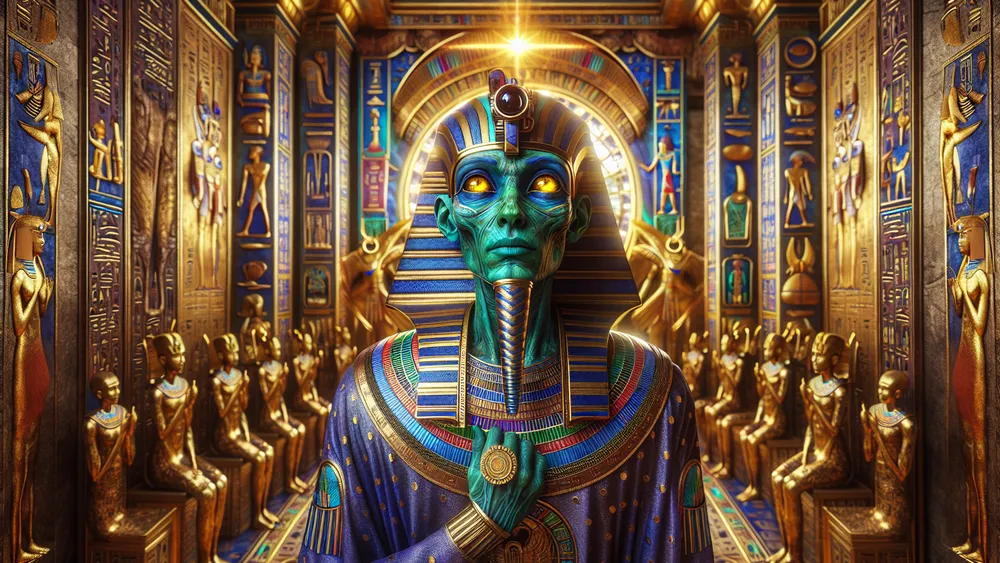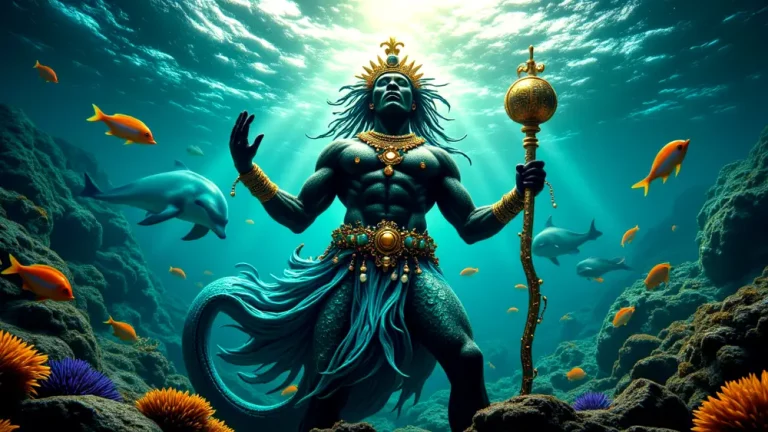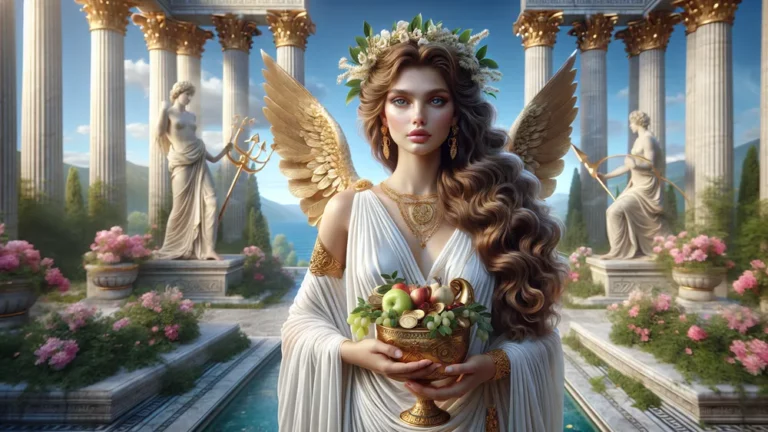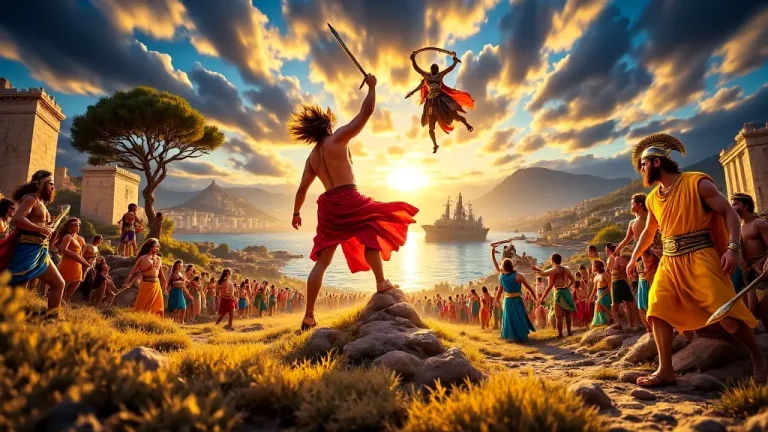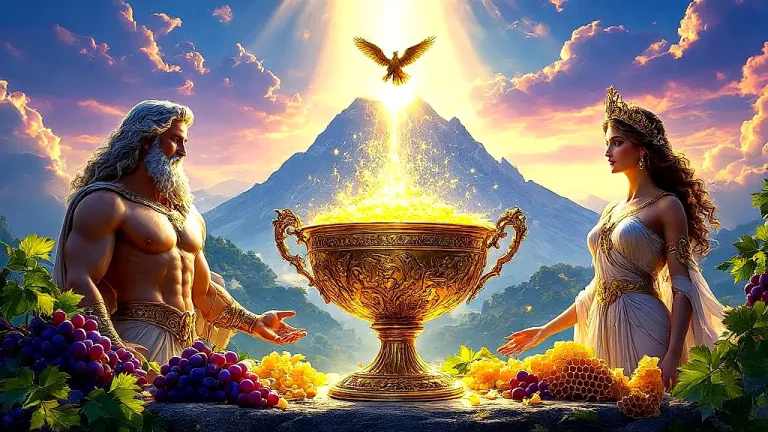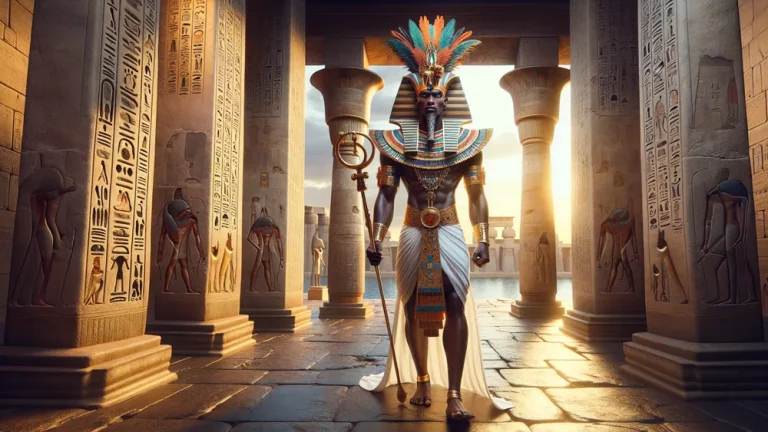Ptah: Ancient Egyptian Deity And Creator God
Ptah stands out as a big name in ancient Egyptian mythology. He’s not just any god; he’s the creator god and the go-to patron for craftsmen and architects. His influence? It goes way beyond myths. Ptah shapes Egyptian culture, religion, and society in many ways. In this blog post, we dive into who Ptah really is.
Key Points:
- Ptah is the creator god and patron of craftsmen in ancient Egyptian mythology.
- Ptah’s influence transcends myths and impacts Egyptian culture and society significantly.
- Ptah’s name likely means the opener or the sculptor, reflecting his role as a creator.
- Ptah often appears as a mummified man and is linked to symbols like the Was scepter and Ankh.
- Ptah plays a central role in creation myths and is known as the Father of the Gods.
- Ptah’s family includes consorts like Sekhmet and children like Nefertum and Imhotep.
- Ptah’s legacy endows him with a continued influence in modern culture and art.
We look at his name, what he symbolizes, the stories about him, his family ties, and how he leaves his mark on history. By breaking down these parts, we get a clear picture of why Ptah matters so much in ancient Egypt.
Who is Ptah?
To get a good grasp of who Ptah is in ancient Egyptian mythology, we need to look at his identity and why he matters so much. So, let’s dive into the details.
Ptah’s Identity and Significance
Ptah stands out as the creator god in ancient Egyptian mythology. He’s not just any deity; he’s the patron of craftsmen and architects, which means he’s super important for anyone building or making things. In Memphis, people really revere him as the chief deity. His role isn’t only about creating the world; it’s also about fertility, so he’s all about bringing life into existence and keeping it going.

This mix of creation and craftsmanship makes him a big deal in both religious and everyday life in ancient Egypt.
- Ptah often appears as a mummified man, showing his link to creation and rebirth.
- The temple of Ptah in Memphis, called Hut-ka-Ptah, is one of the most important religious places.
- People believe Ptah creates the world through thought and speech, which shows his intellectual side.
- Craftsmen and builders often call on Ptah for guidance and inspiration in their work.
Etymology and Names
To really get who Ptah is, we need to dig into where his name comes from and what it means. Plus, it’s interesting to look at the different titles and epithets people used for him.
The Meaning of Ptah’s Name
The name “Ptah” comes from ancient Egyptian, and it likely means “the opener” or “the sculptor”. This fits well with his role as a creator god who shapes everything. You see, variations of Ptah’s name pop up in different texts. Sometimes, it’s spelled as “Pteh” or “Peteh”, showing how pronunciation and spelling can change over time and place.
Ptah also has several titles and epithets that highlight his importance. Common ones include “Ptah the Beautiful Face” and “Ptah the Lord of Truth”. These titles show up a lot in ancient texts and inscriptions, honoring Ptah’s many roles as a creator, protector, and patron of artisans.

- Ptah’s name appears in various forms in hieroglyphs, reflecting regional dialects.
- Titles like “Ptah the Great” are used in temple inscriptions to denote his supreme status.
- Epithets often accompany depictions of Ptah in tombs and monuments, reinforcing his divine attributes.
Attributes and Symbols
So, we’ve got a handle on Ptah’s name and titles, right? Now, let’s dive into how he looks and the symbols that go with him.
Iconography and Depictions
Ptah usually shows up as a mummified man. You often see him in a tight-fitting shroud that only leaves his hands free. He holds a staff that combines three powerful symbols: the Was scepter for power, the Ankh for life, and the Djed pillar for stability. His head? It’s usually covered with a skullcap.
Sometimes, he stands on a pedestal shaped like the hieroglyph for Ma’at, which means truth and balance. These images really highlight his role as a creator god and a patron of craftsmen. The tools and objects he holds aren’t random at all; they’re deeply symbolic.
For example, the Was scepter shows his authority over chaos, while the Ankh represents his ability to give life. The Djed pillar, often linked to Osiris, underscores Ptah’s connection to stability and endurance.
| Attribute | Description | Symbolism |
|---|---|---|
| Mummified Form | Depicts Ptah as a tightly wrapped figure with only hands exposed | Represents his eternal nature and possibly his role in funerary rites |
| Staff | Combines Was scepter, Ankh, and Djed pillar | Power, life, and stability |
| Skullcap | Simple headgear often seen in depictions | May signify wisdom or priestly status |
| Pedestal | Shaped like the hieroglyph for Ma’at | Emphasizes truth and balance |
| Tools | Often shown with tools like chisels or hammers | Highlights his patronage of craftsmen and builders |
Mythology and Legends
Alright, so now that we’ve got a good handle on Ptah’s attributes and symbols, let’s dive into the fascinating myths and legends that surround this ancient Egyptian god. You’re going to love these stories!
Creation Myths Involving Ptah
In ancient Egyptian mythology, Ptah stands out as a key figure in creation myths, especially in the Memphite Theology. These stories say Ptah creates the world just by using his heart and tongue, basically speaking the universe into existence. This way of creating things is quite different from other gods like Atum, who use physical actions. Ptah doesn’t just create; he also shapes reality, affecting both the physical and spiritual worlds.
He’s seen as the father of all gods, which gives him a top spot in the Egyptian pantheon. His interactions with other gods, like his wife Sekhmet and son Nefertum, show how important he is in keeping cosmic order and balance.
- Ptah’s creation method involves intellectual and verbal power.
- The Memphite Theology places Ptah at the center of the universe’s creation.
- Unlike Atum, who uses physical means, Ptah’s creation is more abstract and philosophical.
- Ptah is often referred to as the “Father of the Gods”, highlighting his supreme status.
- His family relationships, especially with Sekhmet and Nefertum, underscore his role in cosmic balance.
Ptah’s Family and Relationships
To really get Ptah’s story, you have to look at his family ties. He has some interesting connections. So, let’s dive into the key relationships Ptah has with his consorts and children.
Ptah’s Consorts and Children
Ptah’s main consort is Sekhmet, who’s a fierce lioness-headed goddess. She’s all about war and healing, balancing destruction and protection. Sometimes, Ptah is also linked to Bastet, another feline goddess. She’s more about protection and nurturing, though this connection isn’t as strong. Then there are Ptah’s kids. Nefertum is one of them, the god of lotus flowers and perfumes.
He stands for beauty and rejuvenation. And let’s not forget Imhotep. He’s a real historical figure who becomes a god of wisdom, medicine, and architecture. Nefertum usually shows up as a young man with a lotus on his head, symbolizing dawn and rebirth. Imhotep, on the other hand, is famous for his wisdom and contributions to medicine and architecture.
- Sekhmet: Often depicted as a lioness or a woman with a lioness head.
- Bastet: Sometimes considered Ptah’s consort, depicted as a lioness or a woman with a cat’s head.
- Nefertum: Associated with the lotus flower, symbolizing rebirth.
- Imhotep: Known for his wisdom and contributions to medicine and architecture.
Historical Influence
So, we’ve got a good grasp on Ptah’s family and relationships. Now, let’s see how he shapes ancient Egyptian society. We’re diving into his impact on architecture and craftsmanship.
Ptah is connected to various deities such as Sekhmet, Bastet, Nefertum, and Imhotep, each representing different aspects like war, protection, beauty, and wisdom.
Ptah’s Role in Ancient Egyptian Society
Ptah plays a big role in ancient Egyptian society, especially as the patron of builders and artisans. You can see his influence in many famous structures dedicated to him, like the Temple of Ptah in Memphis. This temple isn’t just a religious spot; it’s a cultural hub too. But Memphis isn’t the only place where people worship him.
He has several major temples and cult centers all over Egypt. During rituals and festivals, folks offer prayers and gifts to get his blessings for their building projects and art. Ptah’s veneration touches many parts of daily life, showing how important he is in both spiritual and practical ways.
- Temple of Ptah in Memphis: A major religious and cultural center.
- Rituals and Festivals: Included offerings and prayers for successful construction projects.
- Influence on Daily Life: Emphasized in both spiritual and practical realms.
- Other Cult Centers: Spread across Egypt, highlighting his widespread veneration.
Symbolism and Legacy
Alright, so we’ve looked at how Ptah shapes ancient Egyptian society. Now, let’s see how his presence and symbolism stick around through the ages.
Ptah’s Enduring Legacy
Ptah’s influence goes way beyond ancient Egypt. It even touches Greek and Roman mythology. They often see Ptah as similar to their own gods of craftsmanship and creation, like Hephaestus and Vulcan. In modern culture, you can still feel Ptah’s presence. Artists love to depict him in sculptures and paintings, showing off his role as a creator god.
Literary references to Ptah pop up in works that dive into ancient Egyptian mythology. These stories and attributes make the narratives richer. So, these representations not only keep his legacy alive but also give us a peek into how old beliefs still shape our thoughts today.

- Greek and Roman Equivalents: Hephaestus (Greek) and Vulcan (Roman).
- Modern Art: Sculptures and paintings depicting Ptah.
- Literary Works: Books and articles exploring ancient Egyptian mythology.
- Cultural Influence: Continued relevance in discussions about creation myths and craftsmanship.
Ptah’s influence spans across ancient Egypt, Greek, and Roman mythology, modern art, and literary works, which demonstrate how ancient beliefs still impact contemporary culture and thought.
Pantheon of All the Egyptian Mythology Gods
Want to dive into the world of ancient Egyptian gods? Check out this list of all the Egyptian gods. It’s packed with details about each deity. You get to see their roles, their stories, and how they fit into the bigger picture. It’s a great way to understand more about these fascinating figures.
FAQs
1. Who was Ptah in ancient Egyptian mythology?
Ptah in ancient Egyptian mythology was a creator god and the patron of craftsmen and architects.
2. What symbols are associated with Ptah?
Symbols associated with Ptah include the djed pillar, the ankh, and the scepter.
3. How was Ptah worshipped in ancient Egypt?
Ptah was worshipped in ancient Egypt through rituals, offerings, and ceremonies conducted in his temples, particularly in the city of Memphis.
4. What is the significance of Ptah’s family?
The significance of Ptah’s family lies in their roles and relationships within ancient Egyptian mythology, with his consort Sekhmet and children like Nefertum and Imhotep contributing to various aspects of creation, healing, and craftsmanship.

